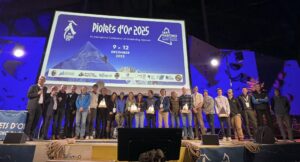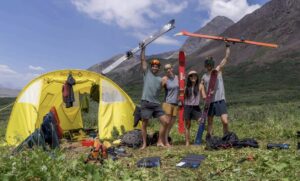This fall, Sam Hennessey will attempt the north face of Jannu East for the third time. Whether or not he succeeds on this formidable 2,400m face in the Kangchenjunga region of Nepal, it would be just one of his accomplishments this year.
This past spring in Alaska, he came away with a trifecta of alpine successes. He climbed Mt. Russell, opened a variation of Tackle-Donini route on the Diamond Arete of Mt. Hunter, and skied down the South Face of Denali.
As a professional mountain guide, Hennessey has to manage his schedule to fit personal projects into the climbing season. The American replied to ExplorersWeb’s questions between guiding gigs in the Alps.
He is also a surprisingly humble guy with a joyful, old-fashioned approach to mountaineering. He seems to believe that adventure is about testing your limits and climbing with friends rather than social media exhibitionism.
Jannu: staying low-key
When he returns to the north face of Jannu East this autumn, supported by the American Alpine Club, his team’s goal is to open a new route on the formidable 2,400m wall. He previously tried with Seth Timpano in 2021 and last year with Michael Gardner. Both times, they didn’t hide their goal but kept a low profile. In Hennessey’s words:
We have tried not to have too much media for a couple reasons: number one, because it is lame to [promote] a climb that you have not completed yet, and two, because it seems there is a distinct lack of creativity among today’s climbers and it would not be [ideal] to have multiple teams competing for space on the wall. Of course, we do not own the mountain and anyone else is free to go there if they choose, but this is the way we’d prefer to approach it.
Combining work and personal projects
He is more than happy to talk about his excellent Alaskan climbing season this year.
“None of the routes we climbed or skied are…cutting-edge in difficulty, but they all had personal significance, so it wound up being quite a satisfying season,” he explained.
On the first good weather spell of the season, he guided the classic Ham and Eggs route on Moose’s Tooth. The trip went so smoothly that he had unexpectedly had three days off, so he quickly organized a personal excursion to Mount Russell with Mark Westman, a good friend with whom he’d never climbed before.
The veteran Westman had made many attempts on Mount Russell in the western Alaska Range since the 1970s, and Hennessey himself had tried it in 2022 with Lisa Van Sciver and Courtney Kitchen.
“That time, we made the first ski descent of the east face from the south ridge but were unable to continue to the summit due to being unprepared for the icy conditions we found on the south ridge,” Hennessey recalls.
South ridge of Mt. Russell
So with a little more equipment, no skis, and excellent weather, they continued the 2022 line along the upper south ridge to the summit. Hennessey describes the climb as mostly moderate, “but the upper south ridge has some spectacular ridge climbing, finishing with a short step of rime ice that felt like something straight out of Patagonia.”
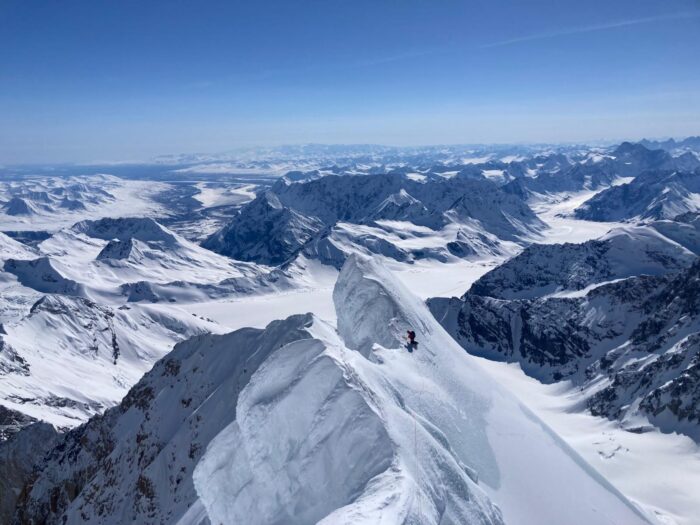
Mark Westman near the summit of Mount Russell. Photo: Sam Hennessey
Then back to work, guiding Ham and Eggs and Shaken not Stirred during a period of unsettled weather. Rob Smith and Michael Gardner had arrived in Alaska by this point, and they all met up in Talkeetna on May 5.
“Our plan,” said Hennessey, “was to go up on the West Buttress of Denali to acclimatize, but to take skis with the intention of skiing something interesting off the summit.”
They were at the 14k Camp on Denali when a weather window suddenly opened. They seized the opportunity, changed their plans, and hurried down Denali and over to Mount Hunter.
The Diamond Arete on Mt. Hunter
“The route we followed up the Diamond Arete is probably best described as a variation of the 1985 Tackle-Donini route,” Hennessey said.
It mounts new terrain for approximately 650m but shares the exit pitch, although in very different conditions than the ones found by Jack Tackle and Jim Donini.
“They apparently climbed steep, fat ice in this location, whereas we found totally dry rock climbing,” Hennessey noted. “We then followed their route all the way to the summit plateau. [We] did manage to tag the true summit, which eluded both the first and second ascent teams.”
The new terrain had some spectacular climbing, including a sustained 300m dihedral in the center of the wall. Hennessey estimates a grade of M6+ AO WI6.
“The conditions made each meter quite hard-fought,” he said. “You often had to clear all the ice away in order to climb the rock underneath or to find protection.”
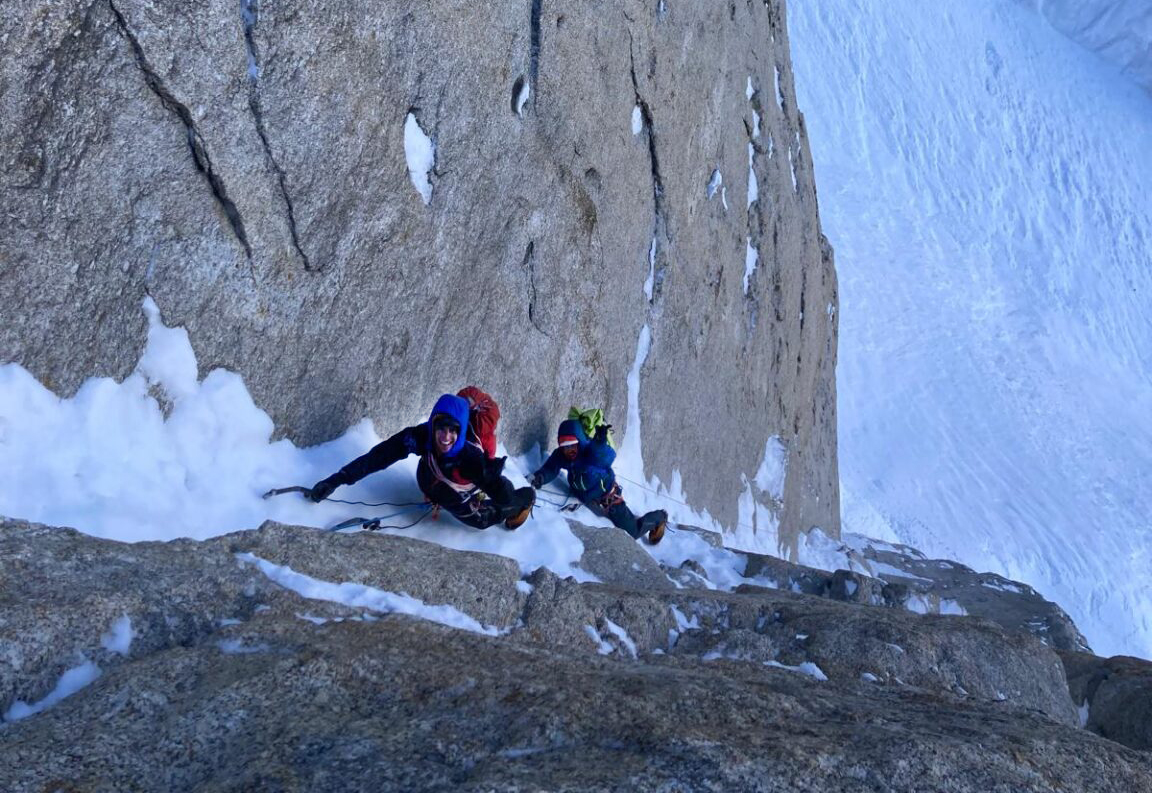
Tough conditions on Mt. Hunter, Alaska. Photo: Sam Hennessey
From the summit, the climbers then traversed the mountain by descending its north side.
“We always planned to descend the north buttress, which was far from an onsight, given that this was my third time to the summit of Mount Hunter and Michael’s second,” Hennessey explained. “However, in the whiteout conditions under which we descended, it felt quite exciting. It was definitely a relief to reach the top of the buttress and the familiarity of its 30 rappels.”
Familiar terrain
Hennessey noted that he had rappelled that buttress five times from the top, and several other times from quite high up, so he was familiar with the terrain. Yet they completed the descent in a remarkably good time, given the tough conditions.
“The most memorable part of the experience was probably the deterioration of the weather window,” he said. “[It] meant that the upper two-thirds of the route, and the entire descent, were done in some quite nasty weather and dangerous avalanche conditions. It definitely added to the feeling of commitment.”
Hennessey says that the team had originally intended to complete a direct line up the center of the buttress, but the deteriorating weather prompted them to traverse over toward the original route.
“Some other team with better conditions or more gumption could add a few hundred meters of hard climbing,” said Hennessey. “It’s an incredible wall of Yosemite-quality granite in a very remote location…an unforgettable experience, even by Alaska standards.”
Gardner and Hennessey first tried the Mt. Hunter route back in 2018, but the weather never broke for them.

Photo: Sam Hennessey
Skiing the South Face of Denali
The team needed a few days in Base Camp to recover from the exhaustion and weight loss — they didn’t take enough food for the climb. Then they headed back to Denali for a last-minute summit attempt at the end of May.
“The weather was generally unsettled, with very cold temperatures, wind, and a bit of snow,” he said. “Even by Denali standards, it felt quite cold…but maybe we are just getting old and weak.”
Skier Eric Haferman from Montana joined the team for the climb and ski descent.
“As it happened, the conditions allowed Michael, Eric, and I to complete the second descent of the South Face of Denali, which was a wild adventure with very firm conditions underfoot and some tricky route-finding in the fog,” Hennessey said.
Steepest face
The South Face of Denali is the steepest and largest on the mountain. Andreas Fransson of Sweden soloed the first ski descent in 2011, and he had to retort to ice axe and crampons on some sections.
“Skiing off the steep side of Denali felt very committing, although it was somewhat familiar because Michael and I have climbed three different routes on this side, so we more or less knew what to expect,” Hennessey said. “It was a cool experience, to be sure, but mostly we came away from it in complete awe of Andreas Fransson, who made the first descent solo with only one rope on his first trip to Alaska!”
A second home
The climbers had some other plans in mind, but the weather crapped out, so they will try again next year. The central range of Alaska has become something of a second home for Sam Hennessey and his friends.
“Both Michael [Gardner] and I have been working as guides on Denali for over a decade, and we tend to spend at least a couple months every year living between Talkeetna and the range,” Hennessey said.
It’s the people as much as the climbing that keeps me coming back year after year. In the range, it’s still possible to have a true wilderness experience, to climb on very remote and difficult walls, or to have a more social experience in base camp or up on the West Buttress. It’s kind of a funny mix-up there between the Denali crowd, the skiers, and the technical climbers, but there’s something for everyone.
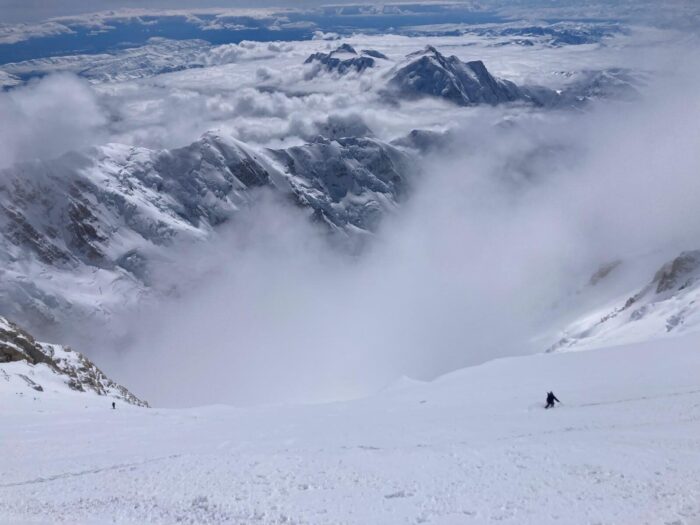
Skiing on Denali. Photo: Sam Hennessey
A climbing life
Sam Hennessy declines to describe himself as a professional climber.
“I’ve worked as a mountain guide since age 21 and have funded the vast majority of my expeditions through that, with the occasional support of the American Alpine Club.”
Hennessey has received a Cutting Edge Grant several times, including for the upcoming trip to Jannu East. His few sponsors, he says, “have been quite supportive of me, despite [his climbs] not being the most flashy, and have helped me to do a bit less guiding.”
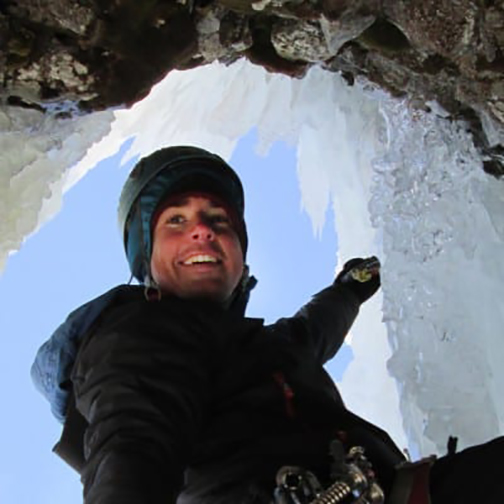
Sam Hennessey. Photo: Adventure Consultants
The problem with life as a guide is that there is no time or resources for highly specific training. “[However,] I’ve found that if you can manage your fatigue from the guiding workload and are diligent about training in your time off, you can reach a level of fitness that is adequate for modern alpinism, even if you are not exactly at your peak for rock climbing performance for most of the year,” Hennessey said.
He adds: “Although technical standards have risen sky-high recently, mountain climbing is still a game for the all-arounder, and fitness and endurance are still the most important attributes. There’s a bit more to it than putting up the rope on an 8c pitch, although that’s certainly helpful at times.”
Love of adventure
Hennessey is also grateful to make a living in the mountains.
“I think there are plenty of opportunities to pursue alpine climbing without resorting to being an Instagram climber, including having a job completely unrelated to climbing,” he notes, referring to Steve Swenson and Raphael Slawinski.
“In fact,” he adds, “it seems to me that a large percentage of those attempting interesting projects in the mountains are not ‘professional’ climbers. Even though climbing news may be dominated by loud voices in social media, there are still way more people out there pursuing their love for adventure without the need for self-promotion.”


